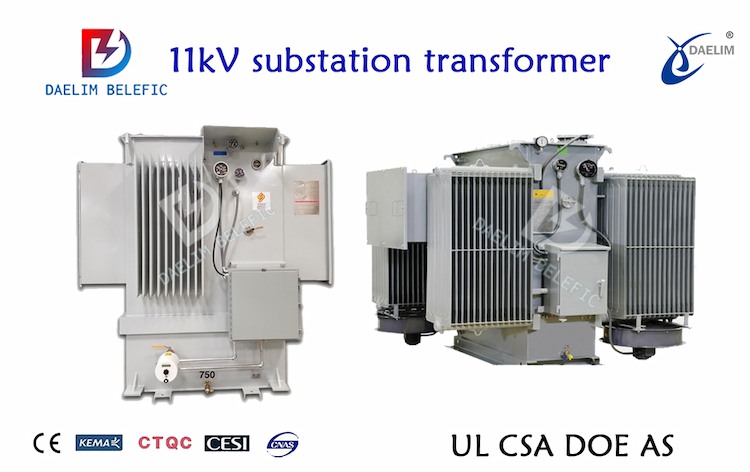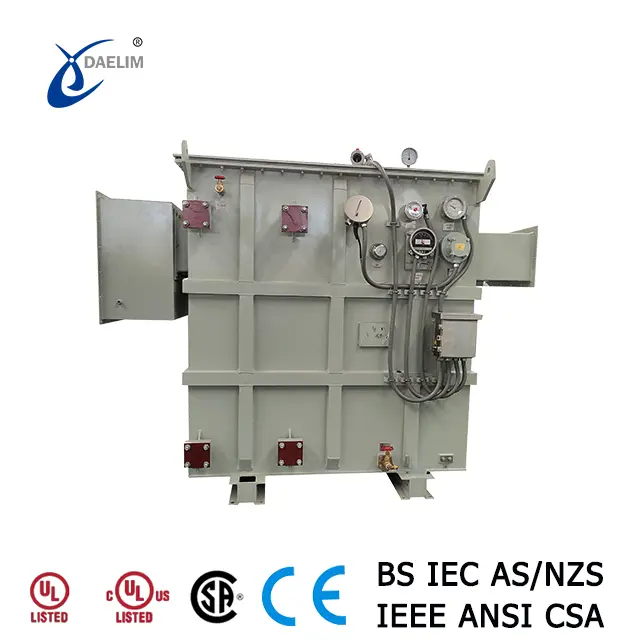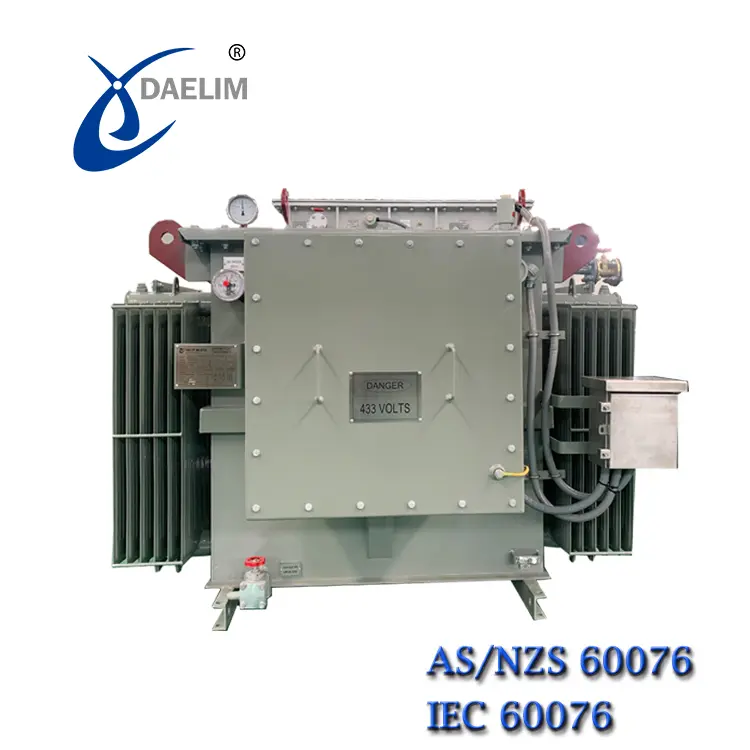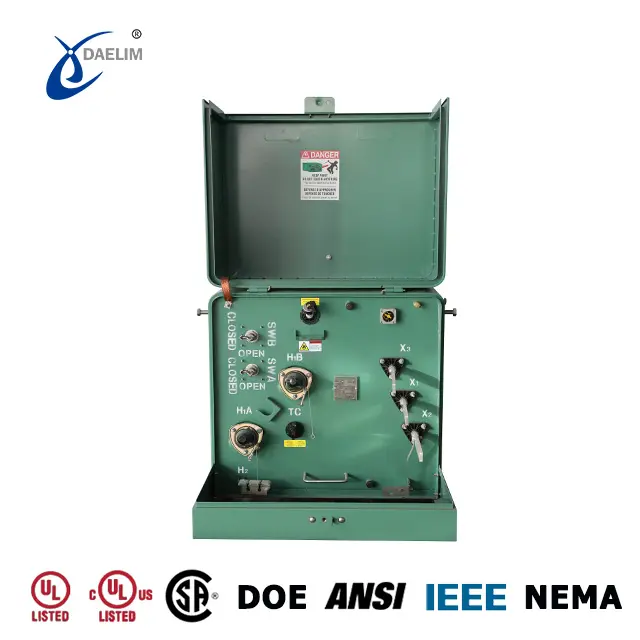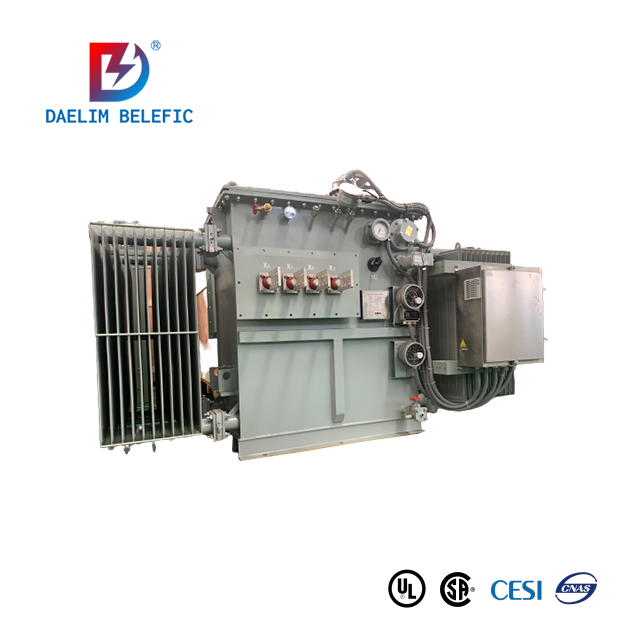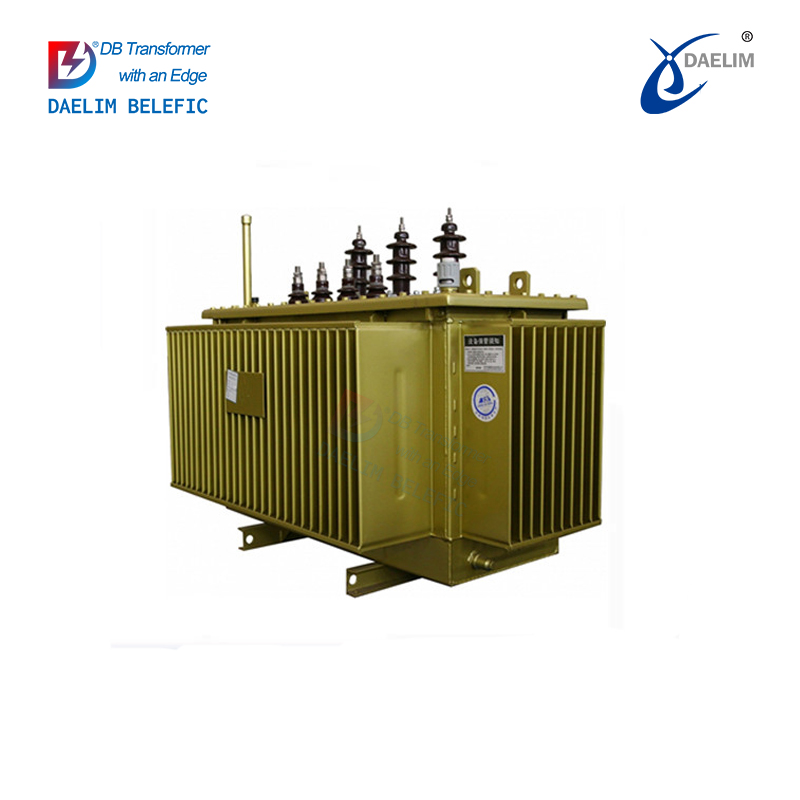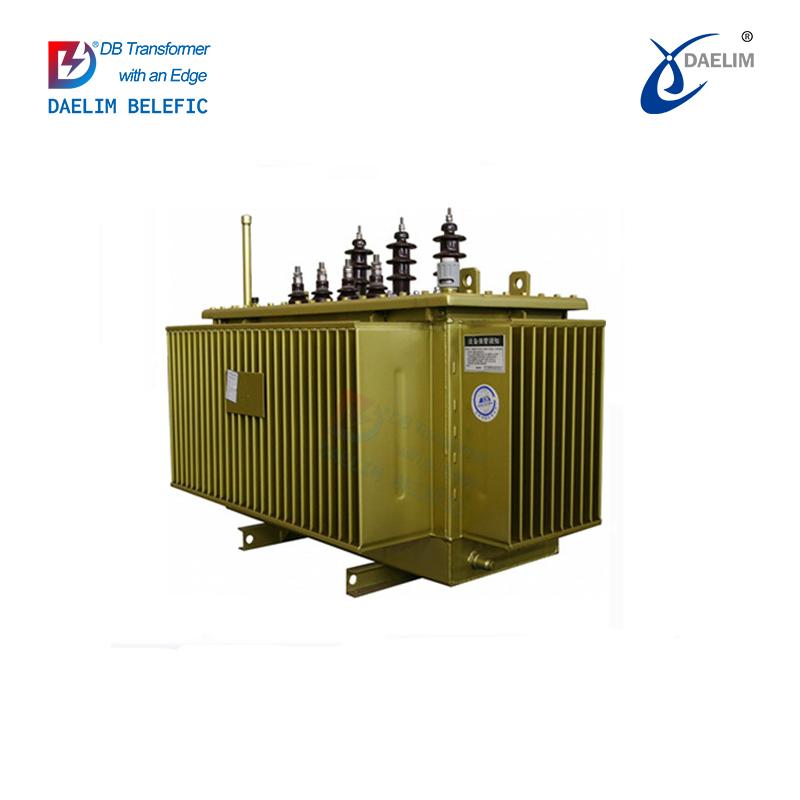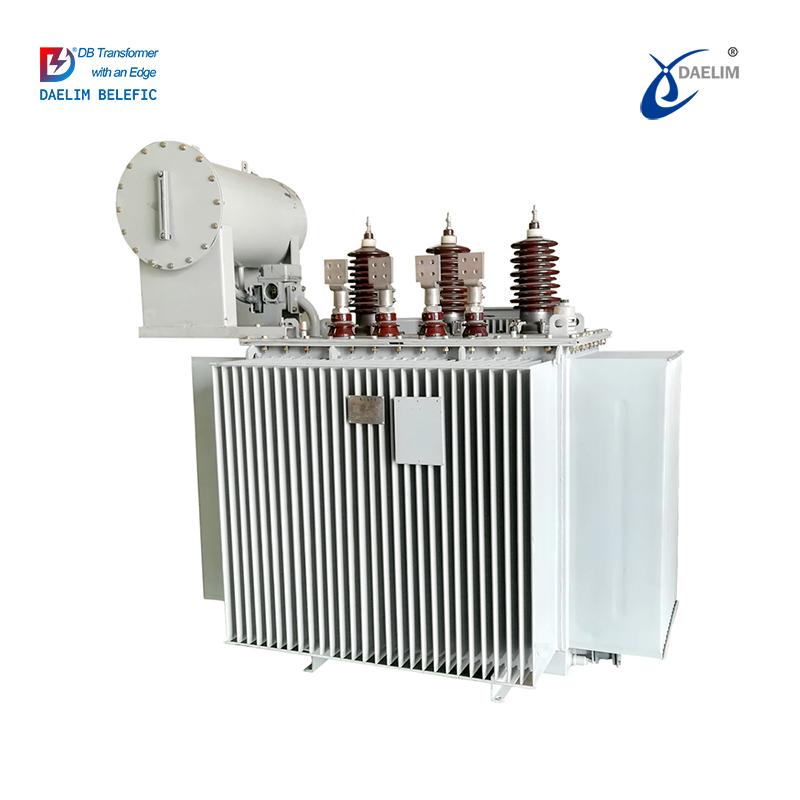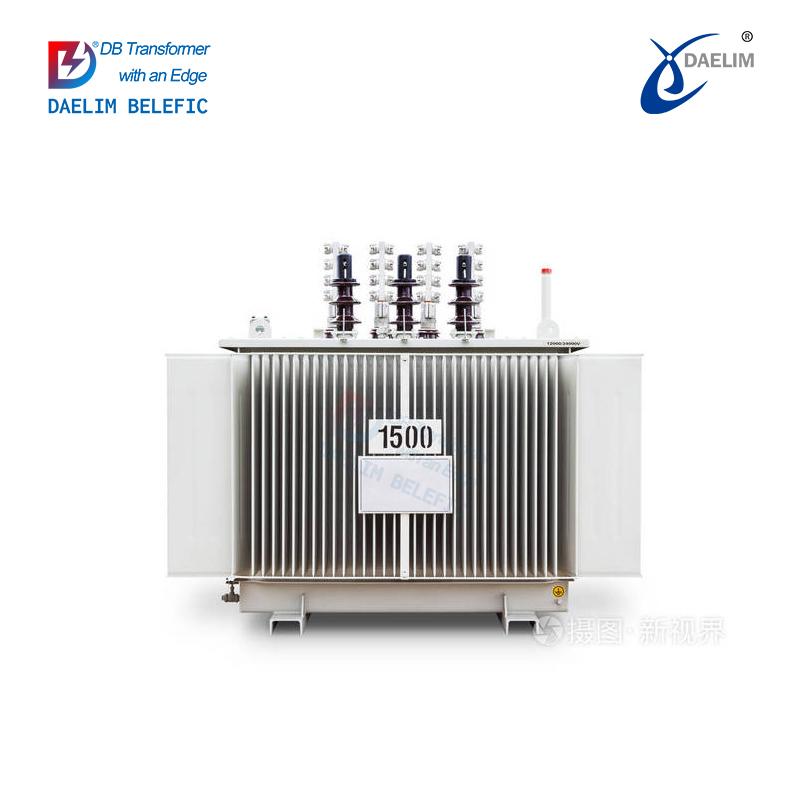11kV Transformer Guide
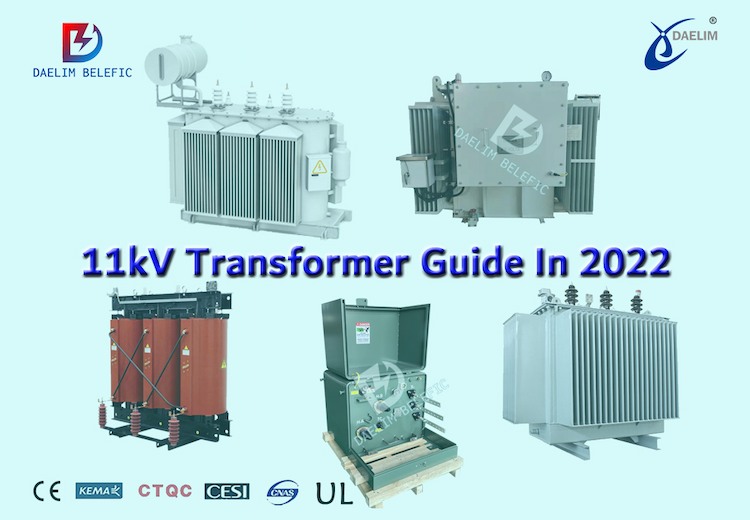
The 11kV transformer is a kind of power equipment that we often see every day, but you may not know it. When we walk on a city street, we will see a small box that looks like a small house when you are on the side of the road or in a residential area. This may be a European box-type transformer substation; when you look upon a country road and see a telephone pole on the Square equipment or cylindrical equipment, these are likely to be 11kV distribution transformers.
Electricity is an indispensable energy source in our life and industry, so transformers are also indispensable infrastructure equipment for a region, country, and economic development. Today, Daelim will talk to you about 11kV transformers.
Daelim is a professional transformer manufacturer and exporter. We have been focusing on the international market for nearly 20 years and have rich experience in transformer design/production and export. Daelim's engineering team has conducted in-depth research and mastery various international standards such as IEEE/IEC/ANSI/AS/CSA/DOE/GOST. Daelim's transformers are exported to the United States, Canada, Mexico, Australia, Ecuador, Chile, Honduras, El Salvador, Denmark, Spain, and other countries.
Learn more: Daelim International Transformer Projects
1. What is 11kv transformer?
11kV transformer refers to the transformer, if it is a step-up transformer, to increase the voltage from 11KV to a higher voltage level, such as 33KV, 34.5KV. If it is a step-down transformer, it refers to the 11KV voltage being reduced to a lower voltage, such as 120V 240V and other voltages to ensure the safe use of the transformer, and then distribute the voltage to thousands of households and factories through the power transmission and distribution system. Assign it to homes and businesses.
Therefore, the longer the distance that power needs to be transmitted, the higher the voltage needs to be used to reduce transmission losses. Once it reaches the substation, the voltage drops.
Read more: 10kv Transformer and Line Fault Finding Quickly
Generally, 11kV, like a low voltage, is generally widely used in residential areas to use electricity for life. At the same time, it is also allocated to the surrounding residents to use the building.
In addition, if we understand it in detail, the 11kV transformer is a static form of motor operation. During the operation, it will always output AC power from a high-voltage or low-voltage circuit to another circuit at a constant and stable frequency. The voltage level here can be changed. Therefore, high and low pressures can increase or decrease at different levels.
When the transformer is running, the input voltage will generate 11kV, and then trace back to the power generation voltage of the power plant, we can know that the voltage of the alternating current is often generated by a very high voltage, such as 440kV, 330kV 220kV, etc. after a long-distance After the transmission of the wire, a usage voltage or transmission voltage of 11KV is generated. But in fact, it is relatively rare to use 11kV directly, and industrial electricity is not considered. For many residents to use safe electricity, the voltage will be reduced from 11kV to the more common 120V, 240V, and 400V through some step-down transformers. Voltage. The daily electricity use of residents is completed under these voltages.
Try for free: 5+FAQ About 15kV Transformer
2. How does an 11kv transformer work?
We can learn from the simplest and most basic transformer knowledge.
A transformer, as the name suggests, is a way to adjust the voltage or wattage used by our household appliances by working with electricity. Then you may have questions here, so why can we only make the life appliances we use run by adjusting the voltage up and down?
We need to know that the voltage from the power plant is a public voltage circuit that is directly transmitted, belonging to high voltage or ultra-high voltage, generally as high as 155kV, 220KV, or even 440KV. 765KV, etc. These voltages cannot be directly used in household appliances. Small The electrical appliances used in daily life cannot withstand such a high voltage, which is very dangerous.
So at this time, we need medium and low voltage 11KV, 33KV, or lower voltage suitable for household appliances. For example, we put a single-phase or three-phase pole-mounted distribution transformer on the outdoor utility pole, which can reduce the high voltage from the power plant and reduce it to the use voltage. We can understand the general process as, for example, the transformer station The medium and high voltage transformer will reduce the high voltage from 220kV to 7200V, and then the public power transmission and distribution circuit of the next level will reduce the 7200V to the 11kV used so that thousands of households can use the safe low voltage of 11KV.
Keep on reading: How Do I Choose A 1500kva Transformer
And there are also some industrial companies that use transformers to regulate the voltage to power large and heavy production equipment to ensure power operation. When some mechanical use voltage is 11KV or higher, we need to specify equipment to reduce the medium and high voltage from the substation.
So I should now have a simple understanding of the home electrical distribution system and the general workflow. So we now discuss how the 11KV transformer works.
Generally, the transformer will initially reduce or increase the voltage by using the two internal coils and using the principle of electromagnetic induction to transfer the AC of one circuit to the other coil. The coil here can be understood as the coil on the winding. The first coil is the primary winding coil, which is used to adjust the primary voltage or the original voltage. The second winding coil is called the secondary coil, because it is located on the secondary or output voltage side, so that it can accept the converted voltage, whether it is boosted or stepped down, and finally exported to the terminal electrical equipment used.
The current of the voltage here passes through the primary winding coil and creates an alternating magnetic force in the iron core of the transformer. The magnetic field then passes through the secondary winding coil, creating an AC voltage. So here we can see that whether it is a boost or a buck is related to the turns ratio of each coil, in this case. If the secondary winding has more turns than the primary winding, the voltage will naturally increase. Conversely, if the secondary winding has fewer turns than the primary winding, a lower voltage will be produced.
Reading more: The Ultimate Guide to Core Type Transformers
Hope these introductions can clear your confusion about how 11KV transformers work.
3. What are the types of 11kv transformers?
Let's talk about it easily. In fact, unless you are a loyal fan of climbing poles or a professional electrical maintenance test technician, you will never look up or look down to notice even if there is nowhere in life Transformer not present. But now with the improvement and development of living electricity, this situation has definitely changed. In the last paragraph, we have initially introduced how the 11KV transformer works simply, how to realize the step-up and step-down, and the fundamental electrical principle of electromagnetic conversion. Then our next introduction is to discuss what types of 11KV transformers are?
Read more: How Much You Know For The Different Types Of Transformers?
Let's observe the ubiquitous transformers and look at the roadside wilds. Your work and life must be inseparable from the transformer.
When we sit at home, our daily electricity use is alternating current, which is inherently more convenient and transmittable. But AC current is generally delivered at medium and high voltages, and then slowly converted to lower voltages for safer and direct use. How lovely and delightful this is. So here we understand that the type of 11KV transformer can be considered in a variety of conditions and environments. Here we can classify it according to the use of the voltage, the internal and external building structure, and the use environment. Of course, there will also be a superposition of multiple-use conditions, that is to say, the 11KV transformer can be a single-phase transformer and a step-up transformer. In fact, for more detailed details, we can look at more electrical engineering books on the operation principle of transformers.
3.1 Step-up transformer and step-down transformer
In the case of classification of voltage change, it can be divided into a step-up transformer that converts from 11KV to a higher voltage and a step-down transformer that reduces the total 11KV to a lower voltage.
The step-up transformer will directly turn up the primary low voltage and higher current of the 11KV transformer into a high voltage (HV) low current on the secondary side of the transformer.
The step-down transformer is the exact opposite of the above, and we won't go into details here.
3.2 11kV substation transformer
There is also a type of 11kV transformer used in skid-mounted substations, this transformer has a compact design, many units are independent and can be disassembled. The radiator, terminal box, etc. of the transformer are designed to be removable for easy installation, disassembly, and transportation. The picture below is a 1500kVA 11kV substation transformer for Daelim's Australian customer who received and installed it for use in a skid-mounted substation.
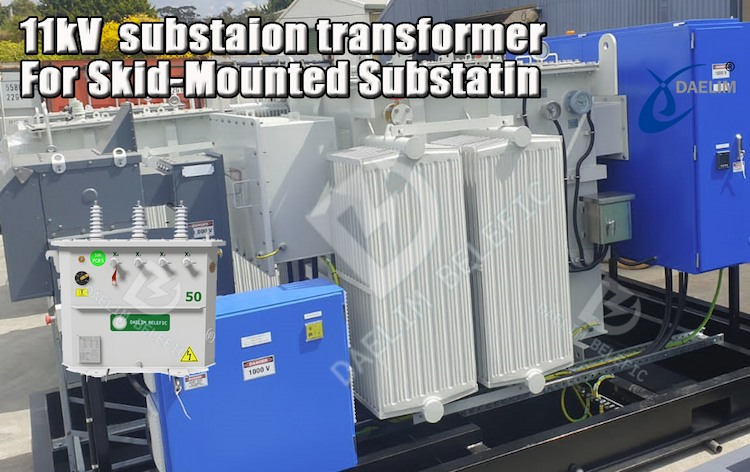
Read more: Basics Guide To Prefabricated Substation
3.3 Single-phase transformers and three-phase transformers
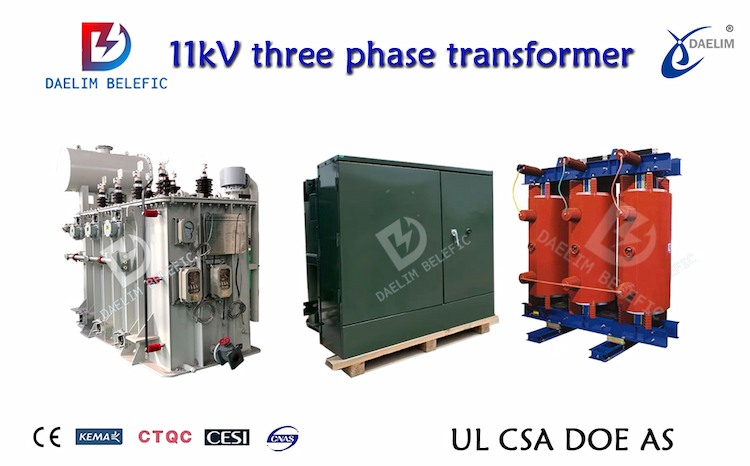
In terms of transformer number of phases, the 11kV transformer is divided into single-phase transformers and three-phase transformers.
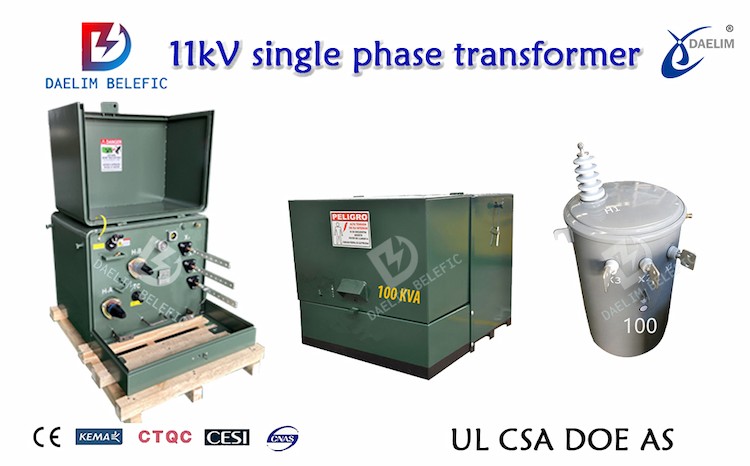
Conventional three-phase transformers are usually used in three-phase transportation non-accompanying power systems because compared to single-phase, it is more cost-effective than single-phase transformers. However, special circumstances need to be considered here. When the installation size is important, we can consider using three single-phase transformers combined into one single-phase transformer, which will be more convenient for transportation and installation. This situation is more common in rural column-mounted power distribution systems. use.
Try for free: Pad Mounted Transformer
3.4 Power transformers, distribution transformers, and transformers
Power transformers are often used in transmission networks to step up or step down. It operates primarily during periods of high or peak load and has its highest efficiency at or near full load.
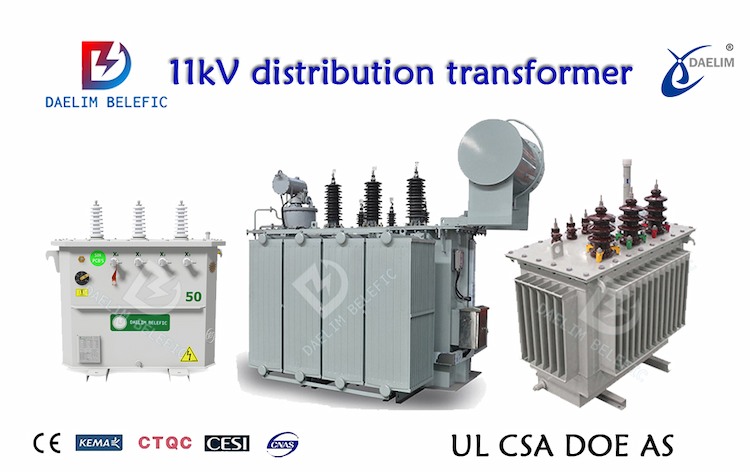 Distribution transformers step down the voltage for distribution to domestic or commercial users. It has good voltage regulation and operates 24 hours a day with maximum efficiency at 50% full load.
Distribution transformers step down the voltage for distribution to domestic or commercial users. It has good voltage regulation and operates 24 hours a day with maximum efficiency at 50% full load.
Try for free: How to choose the best distribution transformer?
Transformers include C.T and P.T, which mostly appear as substations or transformer accessories, so we won't discuss them here.
3.5 Three winding transformers, double winding transformers, and autotransformers
According to the number of transformer windings, an 11kV transformer can be divided into three winding transformers, double winding transformers, and autotransformers. Autotransformers are also single winding transformers.
Three-winding transformers have three windings and three different voltages, which are generally used in substations in the power system area, and are connected to three voltage levels respectively.
Double winding transformers have two windings with two different voltages, which are connected to two voltage levels in the power system.
Autotransformers have only one winding and are used to connect power systems of different powers, and can also be used as ordinary step-up or step-down transformers.
Read my article on Comprehensive Guide to 1000kVA Transformers
3.6 Outdoor transformer and indoor transformer
This is the difference between the owner's use conditions. 11kV dry-type transformers are mostly used indoors, and 11kV oil-type transformers are mostly used outdoors, even in the wild under extreme weather.
So here is another difference, 11kV resin dry-type transformer, and 11kV oil-immersed transformer oil-cooled dry-type transformer, here is the difference in the cooling method of the oil-based cooling medium.
As the name suggests, oil-immersed transformers are cooled and insulated according to insulating oil, while dry-type transformers are mostly used for self-cooling, that is, air circulation cooling, and sometimes fan cooling is also considered.
Read more about oil-immersed transformers: Overview of Oil-Immersed Distribution Transformers
4. Customized 11 kV Transformer
Daelim's professional transformer engineer team can customize according to your transformer's technical needs. No matter what type of 11 kV transformer Daelim can be customized, designed and manufactured, and tested. If you are looking for a professional transformer supplier for cooperation, please contact Daelim Transformer .
Related Products
Related Article
Advantages of Transformer Yyn0 Vector Group
The Yyn0 vector group transformer offers distinct advantages in suppressing high-order harmonic currents and managing low-voltage single-phase ground short-circuit faults. However, it does have limitations regarding the handling of single-phase unbalanced loads, where the Dyn11 connection demonstrates superior performance. These characteristics should be carefully considered when selecting the appropriate transformer connection for specific applications to optimize performance and reliability.
Impact of Operating Temperature on Transformers
Maintaining an optimal operating temperature is crucial for the longevity and reliability of transformers. Excessive temperatures accelerate the aging process of the winding insulation, leading to a significant reduction in service life. Ensuring that the hottest point temperature remains within safe limits can help in maximizing the operational lifespan of transformers and maintaining their performance. For long-term efficiency and reliability, it is essential to monitor and control the operating temperature of transformers.
Transformer Drying Methods and Procedures
The article outlines transformer drying methods: oil tank iron loss, zero-sequence current, and vacuum dehumidification, emphasizing controlled heating and moisture removal for enhanced insulation reliability.
Transformer Oil Aging, Regeneration, and Purification
Effective management of transformer oil ensures prolonged equipment lifespan and reliable performance in electrical applications.
Technical Requirements for Transformer Installation
The article outlines critical technical requirements for transformer installation, covering support, grounding, cable management, safety measures, and fan operation to ensure safe and efficient electrical system performance.
Basic Knowledge of Transformer Transportation
Transformer transportation varies by size. Below 80 tons, use oil with dry air above oil level. Above 80 tons, use dry gas, monitor pressure, and conduct tests. Ensure sealed integrity and monitor regularly during storage.

